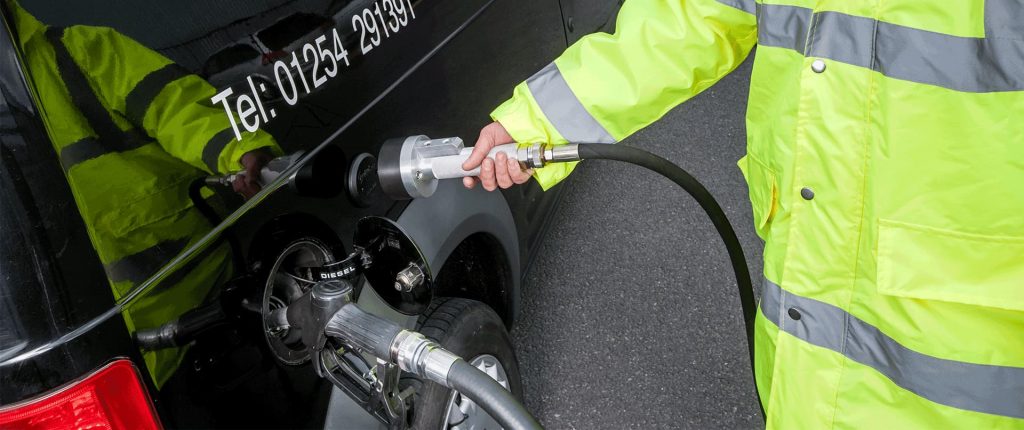How To Check Your Fleet Is Still Roadworthy
The last few months may have seen your fleet put on the backburner while businesses put operations on hold. Now with things starting to open up again and companies returning to full operation, you might be thinking it’s time to get your fleet up and running.
However, if your vehicles have been sitting idle for many weeks, you should make sure that they are roadworthy before taking them out again. Fines, repair bills and a damaged reputation could cost you dearly if anything does wrong. So, make sure your fleet is roadworthy for post-COVID-19 operations by performing the following checks:

MOTs
Fortunately, there have been changes to MOTs as a result of COVID-19, giving you more time to get your vehicles their annual checks.
All MOTS due after 30th March 2020 have been extended by six months. So, unless it was due on or before 29th March 2020, you must book your MOT unless you or someone you live with has coronavirus symptoms, or you are in a high risk group.
However, you are still responsible for ensuring that your fleet is road safe before they are allowed out onto a public road, and you could face prosecution for failing to comply.
Wheels and Tyres
Make sure you carry out pressure checks on each tyre on your vehicles, including the spare, to ensure they are all fully inflated. Even if they have been sitting for a long time doesn’t mean they can’t have lost pressure; they can still suffer from wear and tear from the environment. Under-inflated tyres can limit handling and affect braking distance, and overinflated tyres could risk a blowout.
Carefully inspect the tyre’s tread to ensure you are complying with legal standards (at least 1.6mm deep) and are operating at safe levels. This process could take at little as five minutes per vehicle but will seriously increase driver safety, not to mention ensure you won’t endure fines for operating with defective tyres.
Lights
For the safety of your drivers and other road users, all vehicles in your fleet should have functional indicators, hazard lights, headlights, fog lights, reverse lights and brake lights. It’s crucial that other drivers can see your vehicles. Most lights can be tested by simply turning on the vehicle. To test brake lights, find something with a reflective surface like another vehicle and check the lights in the mirror when you push the brake pedal.
If any are broken or not functioning correctly, get them fixed first before reintroducing that vehicle into your fleet.
Flat Battery
How long a vehicle’s battery holds charge depends on its age, how often the vehicle is driven and how far. Alarm systems in your vehicles and onboard computers can drain the battery even while parked, so it’s essential to keep it topped up so these features can still function as normal.
If possible, your vehicles need starting once a week to keep them running. But if this isn’t possible during lockdown, when you come to start up your fleet, run a few checks to ensure the battery is still functioning normally. Start the engine and warm it up; run the air conditioning or another feature to test that this still works; check that your battery indicator is not showing it needs attention and when you slowly move the vehicle, ensure there aren’t any strange noises or sudden jolts.
Sticking Brakes
Your vehicles’ handbrakes have likely been on for weeks if not months. Having the handbrake on for an extended period can cause brake pads to get stuck to the discs, and possibly, not release when your driver attempts to drive the vehicle.
When first driving the fleet, instruct your drivers to attempt to move the vehicle backwards and forwards and test the brakes for stiffness with an initial test drive. Any performance issues should then be addressed and repaired. Brake fluids should also be professionally checked after a long time without operation, especially as a build-up of moisture can contaminate brake fluid and reduce vehicle performance.
Windows and Mirrors
If your windows in your driver’s central view have any damage wider than 10mm, this will cause an MOT to fail, as will any damage larger than 40mm in the whole of the swept area.
Check your windows and mirrors for damage and have them repaired or replaced as appropriate. Also, ensure that windscreen wipers don’t have any tears or holes so that they can still function effectively in ensuring that your drivers can see in adverse weather conditions.
Fuel Tank
Your fuel tank should be filled sufficiently. If your fuel tank isn’t full, the air above the fuel might condense and store moisture inside the tank over lockdown, which could cause rusting. Make sure you get your fuel tanks checked and cleaned if this is the case before you send your fleet out after lockdown ends.

And if you’re looking for fuel monitoring systems to optimise your fuel dispensing to your fleet of vehicles, contact Fueltek today. Our range of systems monitor deliveries and stock movements in and out of your fuel storage tank, allowing you complete control of your entire fleet’s fuelling operations.







